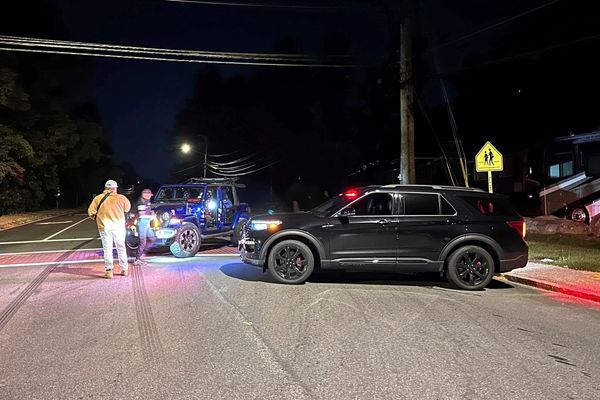A study has found that young red kangaroos protected by Australia's dog fence take longer to mature compared to their counterparts on the other side, who grow up quicker to avoid falling prey to dingoes.
It was an unexpected discovery by Flinders University, as back when they began in 2018 researchers were initially interested in whether the head shapes and teeth of kangaroos differed on either side of the fence due to differing diets.
The findings have been published in the Journal of Mammalogy by lead researcher Vera Weisbecker and the Global Ecology labs from the Australian Research Council Centre of Excellence for Australian Biodiversity and Heritage.
"When we looked at the data, we were like, 'Hang on, this is strange, why is this happening?' So, then we started analysing the data in more detail and found the rather unexpected pattern," Dr Weisbecker said.
Researchers were not surprised there were fewer smaller kangaroos where they were exposed to dingoes, but they were startled to find that, at any given age, the young kangaroos protected by the fence were growing more slowly.
"They were lighter and less thick. They were just smaller, and that's not an adaptation that you'd expect in such a very short time," Dr Weisbecker said.
"The possibility that red kangaroos can quicken their growth patterns to suit conditions is really exciting, if this is really true."
Further research conducted
The dog fence is an "iconic Australian infrastructure" that is more than 5,600 kilometres long and visible from space.
Research fellow Frederick Saltre used satellite-based analysis to evaluate vegetation cover to ensure the difference in growth rate was not simply due to higher food availability outside the fence.
"When we want to look at difference in growth rate, most of the time in terms of ecology, we want to look at the primary food source species," Dr Saltre said.
"So that was the main idea behind looking at the different vegetation cover on each side of the fence to see if we could see a difference that could explain the difference in growth rate."
Once again, the results were surprising.
Dr Saltre expected to see more food on the side where the larger kangaroos resided, but it turned out to be the opposite.
His rationale for the results is that the larger kangaroos must use their resources more efficiently if they grow faster, but that also something else must be limited.
"For example, if you want to go faster, you're going to be limited. For example, fewer offspring and fewer females, which is what we found as well.
"It was another unexpected discovery."
However, there are limitations to this study as the satellite imagery only compared the greenery and not the nutritional value.
What do others think?
University of Sydney senior lecturer Thomas Newsome has been studying dingoes for a decade and maintains a strong interest in predator-prey dynamics and the impact they can have on the environment.
"We've known that dingoes can regulate prey numbers. There are many studies, but we haven't studied the pathways like fear and stress of being predated upon," he said.
Dr Newsome thinks the fear and stress of being preyed upon is the most obvious explanation for the difference in the growth rate between the dingoes.
"They looked at two different populations either side of the fence, with a relatively similar sort of habitat, and the main difference is the presence and absence of dingoes," he said.
What's next?
This discovery was made over a short period of time, and researchers agree that repeat studies need to take place over a longer period to address how much the dingo fence is affecting the population of red kangaroos.
"This study gave us an excellent opportunity to explore this, the dingo fence has given us a full experiment," Dr Saltre said.







